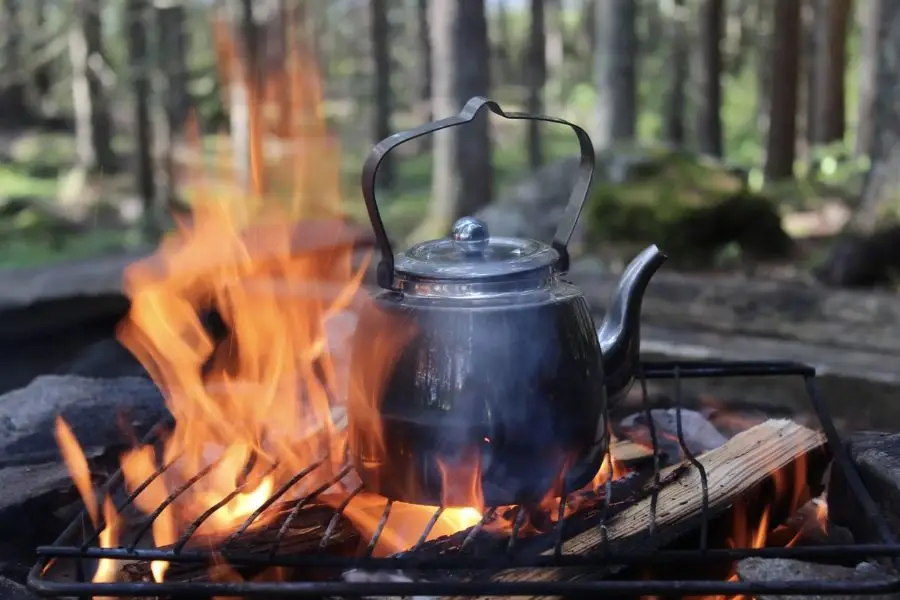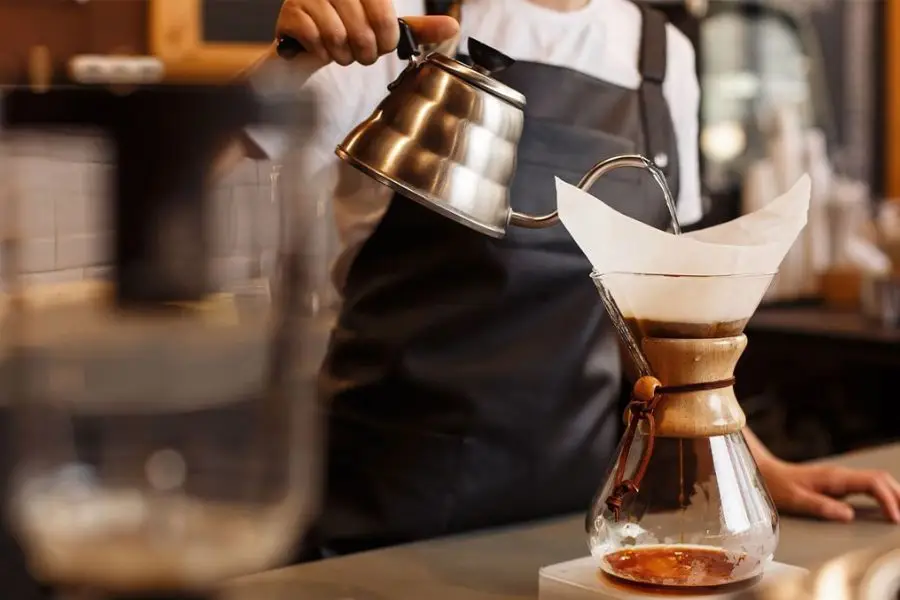How To Make Coffee When Rafting The Grand Canyon: 5 Wild Brew Tips

A way to energize yourself while rafting the beautiful landscape of the Grand Canyon with a hot cup of coffee. But brewing coffee in the wild is no simple task — from limited space to keeping the environment unharmed. So, if you want to learn how to make coffee when rafting the Grand Canyon, this article covers everything from equipment selection to how we can brew with no trace. These tips will help you enjoy a delicious cup of coffee while respecting and protecting the natural beauty of the surrounding landscape.
Why Is Coffee Important When Rafting the Grand Canyon?
If you are rafting through the majestic canyons of the Grand Canyon, a hot mug of coffee saves your spirit and fuels your day or reminds you to take a break midway through your journey. For many coffee lovers, coffee is a hobby. Yet, enjoying coffee in the wilderness is also a vital part of the experience, always providing an impression of closeness to ordinary life despite being far out in nature.

However, learning to make coffee when rafting the Grand Canyon involves more than just brewing skills; it requires careful planning to face the challenge below:
- Limited storage space: With rafts and kayaks offering minimal room, your coffee equipment must be compact and highly functional.
- Challenging weather: From splashing waves in rapids to unpredictable gusts of wind, nature doesn’t always cooperate, making it harder to prepare your coffee.
- Poor water quality: The Colorado River’s sediment-heavy water isn’t ideal for brewing. You’ll need proper equipment and techniques to ensure it’s safe and enjoyable to drink.
- Environmental responsibility: The Grand Canyon is an untouched natural treasure, and minimizing your impact is important. This involves thoughtful preparation, from responsibly disposing of coffee grounds to ensuring you leave the area as pristine as you found it.
5 Essential Tools for Making Coffee on the Grand Canyon River
On the journey across the Grand Canyon, you should carry your coffee-making tools to ensure a seamless journey if you know how to choose the right ones.
- Portable Stove: Compact camping or gas stoves boil water quickly without taking up much space, making them ideal for river trips like the Grand Canyon.
- Small pots and kettles: Lightweight, heat-resistant materials that are easy to carry and suitable for outdoor conditions.
- Coffee mugs: Stainless steel mugs or insulated mugs help preserve the flavor of coffee and prevent breakage when impacted.
- Airtight containers or bags: Keep coffee beans or grounds fresh and protected from moisture, ensuring the original flavor throughout the journey.
- Waterproof bags: Protect all brewing equipment and coffee sources from moisture and environmental influences, especially for making coffee on a rafting trip and maintaining the quality of coffee when traveling in the wild.
5 Tips on How to Make Coffee when Rafting the Grand Canyon
When rafting the Grand Canyon, preparing a delicious cup of coffee can be your experience’s highlight. Here are detailed instructions for each method of making coffee on the river to make yourself a great cup.
Cowboy Coffee
The Cowboy coffee brewing method is one of the most classic and suitable for those who love simplicity. No complicated equipment is required, just a tiny pot and a little coffee powder; you can make a strong cup in the middle of nature.

Detailed steps:
- Boil water: Pour enough water into the pot and boil it on the camping stove. Boiling water will help extract the full flavor from the coffee powder.
- Put coffee powder: Lower the gas flame and add coffee powder (2 teaspoons for each cup) when the water boils. It is something that can assist the coffee in mixing with minimal equipment.
- Steep: Give the coffee powder a gentle stir, and let it steep for 3-5 minutes to extract the flavor fully.
- To allow the coffee ground to settle: Switch off the heat and allow a few minutes for the ground to pay at the bottom of the pot, thus reducing powder fall when pouring.
- Pouring coffee into a cup: Carefully pour the coffee into a cup, avoiding the remaining coffee powder falling into the cup.
French Press
French Press is a famous coffee brewing method that can retain the richness and sophistication of coffee. This method is ideal for large groups because the French Press can quickly brew a large amount of coffee.
Detailed steps:
- Prepare hot water: Boil water and let it cool for about 30 seconds to reach the ideal temperature of 90-95°C, helping extract the coffee’s maximum flavor.
- Add coffee to the pot: Add 1 teaspoon of coffee powder for every 100 ml of water to the French Press.
- Pour and Stir: Pour hot water into the pot, stir gently to dissolve the coffee, and soak the beans until the desired flavor is achieved.
- Steep and Wait: Cover and steep for 4 minutes to allow the flavor to permeate.
- Press and Pour: Press the lever down slowly to filter the coffee grounds, making the cup of coffee smooth and free of residue.
This method is ideal for groups of friends or families because it can brew large amounts, allowing everyone to enjoy a delicious cup of camp coffee on the Grand Canyon River.
Pour-Over
The pour-over method produces a clear and smooth cup of coffee with a balanced flavor. Thanks to the minimal equipment, this method is easy to carry and suitable for outdoor trips.

Detailed steps:
- Setup the equipment: A pour-over filter is mounted to an empty cup or other container (use filter paper if needed to catch coffee grounds).
- Add the coffee to the filter: Measure approximately 1 teaspoon of coffee powder for every 100 ml of water to obtain the required strength in the cup.
- Boil and rest: Boil water, place it to wait 30 seconds, then pour from the center from in a spiral to out. This helps the water to contact the coffee powder evenly, bringing a balanced flavor.
- Wait for the coffee to flow through: Wait until the water flows through the filter into the cup, helping the coffee cup to achieve a clear and smooth taste.
- Enjoy: A delicious cup of coffee is ready for you to experience, whether in the middle of nature or camp.
With a minimalist device and easy operation, pour-over is the right choice for those who like to brew coffee outdoors but still want the standard flavor.
AeroPress
AeroPress is a compact coffee maker suitable for those who like quick espresso. With simple and fast operation, AeroPress brings a cup of coffee that is rich and delicate in natural conditions.
Detailed steps:
- Prepare the AeroPress: Insert the paper filter into the lid and attach the AeroPress to the mouth of the cup.
- Add coffee: Add about 1 tablespoon of coffee powder, ensuring the right amount for a rich flavor.
- Pour hot water: Pour hot water (about 90°C) into the AeroPress up to the preset line, then stir well.
- Tap the coffee: Insert the plunger and press gently, creating pressure to let the coffee flow through the filter, bringing a rich flavor like espresso.
- Enjoy: A compact, rich cup of coffee is ready to sip and suitable for short and quick trips.
The AeroPress is compact and flexible, an ideal companion for rafting coffee trips with the need to make coffee quickly and without wasting time.
Instant Coffee
Instant coffee is the most convenient solution for those who love minimalism and do not need complicated tools but can still enjoy a hot coffee in nature.
Detailed steps:
- Boil water: Use a camping stove to boil water quickly.
- Add instant coffee to a cup: Take the amount according to the instructions, usually only one packet per cup.
- Add water and stir well: Pour hot water into the cup and stir gently until the coffee is completely dissolved.
- Enjoy: Instant coffee is ready in just a few minutes, fast, and convenient for those who love minimalism.
Leave No Trace Coffee to Protect the Environment
When making coffee on a rafting trip, protecting the environment is extremely important, especially in sensitive areas like the Grand Canyon. Following these tips is ideal for those who want to know how to make coffee while keeping the natural environment.
Properly Disposing of Coffee Grounds
Coffee grounds should not be thrown directly into rivers or left in surrounding areas. Even though organic, coffee grounds can harm the local ecosystem, altering the nutrient balance and affecting plants and wildlife. You should bring eco-friendly bags to collect used coffee grounds. When you return, you can dispose of the coffee grounds in an organic waste bin or proper disposal facility.
Cleaning Coffee Tools Without Polluting
You should not wash your tools directly in the river; soaps can alter the water environment and affect fish and aquatic life. Instead, prepare a small basin or jug to wash your tools away from natural water sources.
Reduce Coffee Waste in the River

Disposable products such as instant coffee packets or single-use filters create unnecessary waste and can harm the environment. Instead, choose coffee brewing tools such as French Press or AeroPress, which are easy to carry and can be reused many times. These tools help you enjoy high-quality camp coffee while protecting the natural landscape of the Grand Canyon.
Wrap Up
On your journey to conquer the Grand Canyon, a delicious cup of coffee can give you energy and an incredible feeling of relaxation. Hopefully, the instructions and tips in this article will help you feel confident in knowing how to make coffee when rafting the Grand Canyon while still preserving the natural environment.




